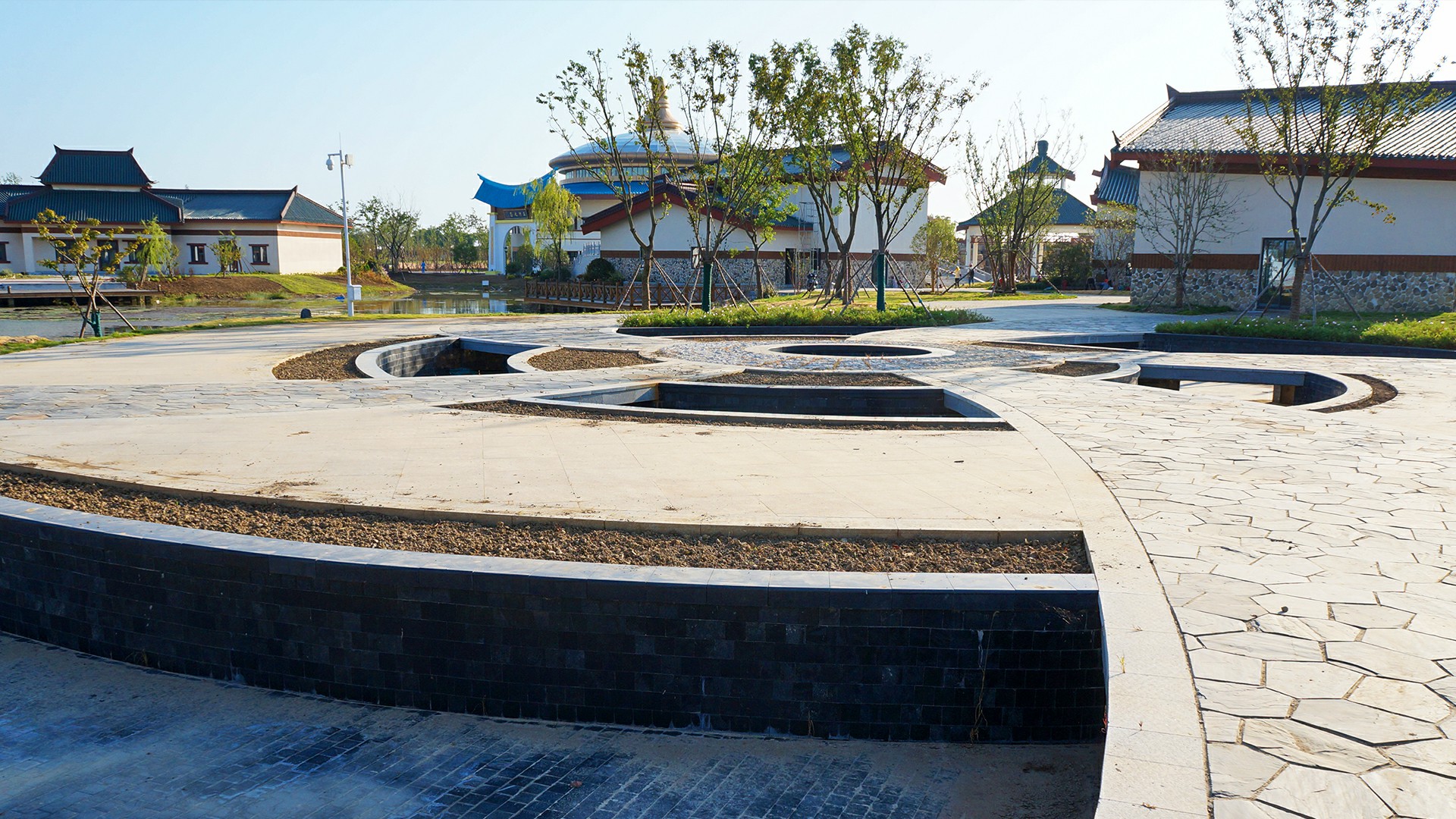The periphery of this landscape is the pattern of a windmill, and the middle circle represents a well, which is just to commemorate Emperor Yao's opening up a new era of human use of groundwater.
The invention of well-drilling technology has greatly reduced mankind's dependence on rivers and lakes. People can go to the alluvial plain and rich intermountain basin to live and produce. It avoids the dilemma that people have to live near rivers and lakes because of water problems, but suffer from it in the rainy season. The invention of well-drilling technology and the discovery of underground water sources enhanced productivity, changed people's way of life. At the same time, people can live together in a large scale, which makes the formation of the city a necessary prerequisite and also becomes the origin of the city.
Water well is the key factor of city formation. Therefore, the culture spread among the people is called "market culture". Urban civilization is also called "market civilization". An ancient barter market was also near the well. It is recorded in The Book of Changes - Part 2 that "The market is set up in the middle of the day, to the people of the world, gather the goods from all of the world, leave after the transaction, and each can get what he wants."
People's earliest barter took place at the wells. Because all people cannot live without water, the earliest well-centered distribution center was formed, so many people put the exchange of goods at the well, thus forming the market.
This is how the concept of "well field" came into being. With the availability of water for irrigation, the civilization of farming was greatly advanced. People were not only dependent on rivers for farming, but also had access to irrigation water in the plains and even in the highlands, which greatly contributed to the development of productivity. People gradually had surplus assets, which facilitated the transition from the original communal system to private ownership.
Recommended tour duration: 15 minutes



